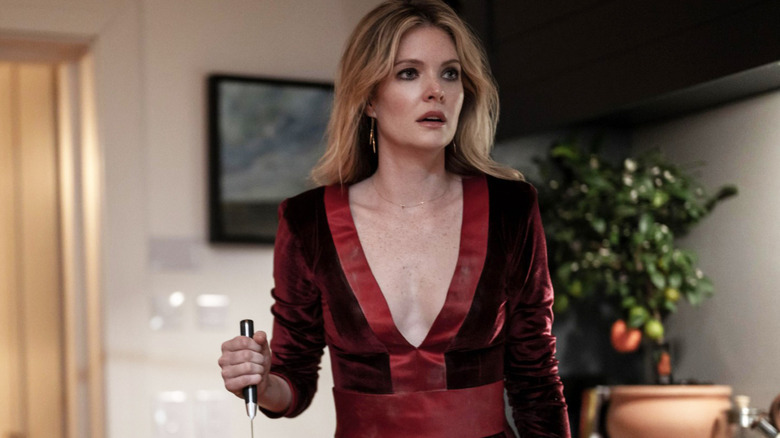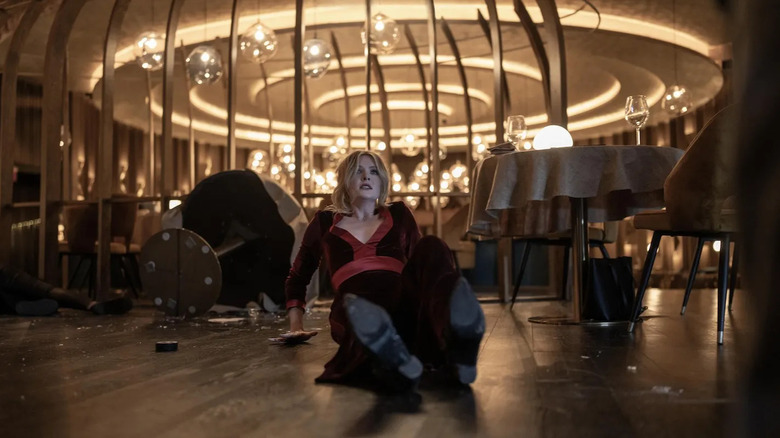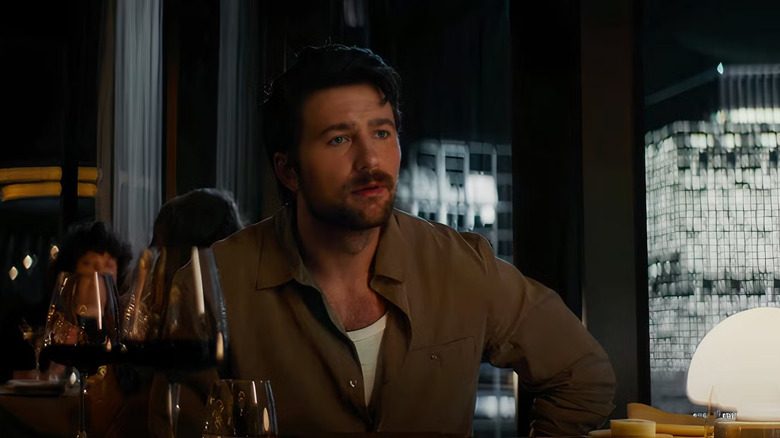Drop's Incredible Screenplay Learned Every Lesson Die Hard Taught Us Decades Ago
We may receive a commission on purchases made from links.
In their invaluable book "Writing Movies for Fun and Profit," authors Thomas Lennon and Ben Garant (former members of "The State" and writers of hit films like "Night at the Museum" and "Herbie: Fully Loaded") had a few pieces of immutable advice for aspiring screenwriters hoping to make a living in Hollywood. Importantly, they advised that writers should never hang all your dreams on a single screenplay, and they should be able to toss aside a script if it gets turned down. They also advised that writers say, "Yes, I can do that," to every single studio note, no matter how ridiculous. They wanted to ensure that an ambitious should churn out as much work as possible, and worry more about "entertainment" than "art."
Perhaps most crucially, an aspiring screenwriter should watch "Die Hard" over and over and over again. The screenplay to John McTiernan's "Die Hard," credited to Steve E. de Souza and Jeb Stuart, is — even in 2025 — something of the gold standard when it comes to modern Hollywood screenplays. It has a clever premise relegated to an enclosed space. It has well drawn-out characters,and efficiently established their relationships with only a few lines of dialogue or a simple visual action. We know, for instance, that Holly (Bonnie Bedelia) is on the outs with John (Bruce Willis) when she turns their marriage portrait down on her desk. "Die Hard" also pays off every single setup. Every detail introduced in the first third will come into play at the end. It actually becomes a plot point later in the film, when Hans (Alan Rickman) turns the aforementioned portrait back upright, realizing the connection between Holly and the rogue cop causing him trouble.
Christopher Landon's new film "Drop," written by Jillian Jacobs and Chris Roach, clearly took Lennon's and Garant's advice. Like "Die Hard," the story in "Drop" also takes place in an enclosed high-rise, but the filmmakers were also careful to cleanly pay off every setup.
Drop knows how to pay off every set-up
The premise of "Drop" is fun. A wounded mother named Violet (Meghann Fahy) is going on her first date in years. Her abusive husband died several years before in a domestic conflagration that left Violet bloody and bruised ("Drop" doesn't give the audience the full details of the conflagration until later on). She has agreed to go to a high-rise restaurant in downtown Chicago to have dinner with a photographer named Henry (Brandon Sklenar), a man she's been chatting with on the dating apps. After being seated, however, Violet begins receiving mysterious, threatening texts. There is someone in her house, she learns, and they are poised to kill her son. If Violet tells anyone about the texts, her son dies. She is then instructed to kill her date.
The texts are coming via a brand-neutral AirDrop-like app, so Violet knows that they are coming from inside the restaurant. Someone is watching her very, very closely. But who could it be? The cool bartender? The first-night waiter? The lascivious pianist? The raucous prom night kids? It's impossible to tell. Each character that is introduced in "Drop" has something to do, even if it's just to be a red herring. Everyone might be an active participant in the mystery, so the audience is forced to scan the screen, eyeballing background figures, looking for clues. When the film's heroine tries one tactic to escape her desperate situation, and it fails, the stakes are thereby raised.
As the plot goes on, Violet invents a very long string of excuses to get up, use the bathroom, talk to others, and do whatever rudimentary investigations she can. Henry, quite luckily, is the kindest, most patient man ever, offering infinite understanding as Violet's behavior becomes more erratic.
Drop is Die Hard in a restaurant by way of Alfred Hitchcock
This is already a clever premise, and one that allows the filmmakers to do a lot with a limited space (the film cost a modest $11 million to make). "Drop" is only juiced up by its clever, lightweight screenplay, though. There was a reason, for instance, why Violet's five-year-old son was using a certain toy earlier in the film, as that comes into play in the film's climax. Some of the innocuous things that supporting characters say to Violet early in the film turn out to be clues.
I don't want to oversell it too much, because the script is not as complex or intellectually intricate as, say, "Tinker Tailor Soldier Spy." But it does follow the basic "Die Hard" principles that make a thriller better. There was a time when "Die Hard" was held as the bellwether for all pitch meetings that followed. A screenwriter might say their film is "'Die Hard' in a school," or "'Die Hard' at the mall." Heck, even "Speed" was advertised as "'Die Hard' on a bus." The 1988 actioner was, we all agreed, the high-water mark for the genre. (Be sure to watch "White House Down" sometime soon. It's "Die Hard" in the White House. It's the "Die Hard" of "Die Hard" knockoffs.)
"Drop" is not as good as "Die Hard," but it's a wonderful low-budget version of it. It's "Die Hard" in a restaurant, by way of Hitchcock, but with a welcome element of humor and whimsy. Director Landon had previously directed "Happy Death Day," "Freaky," and "We Have a Ghost," and he clearly has a talent for balancing humor and genre thrills. "Drop" sees him, once again, bringing his A-game, and you should seek it out immediately.


